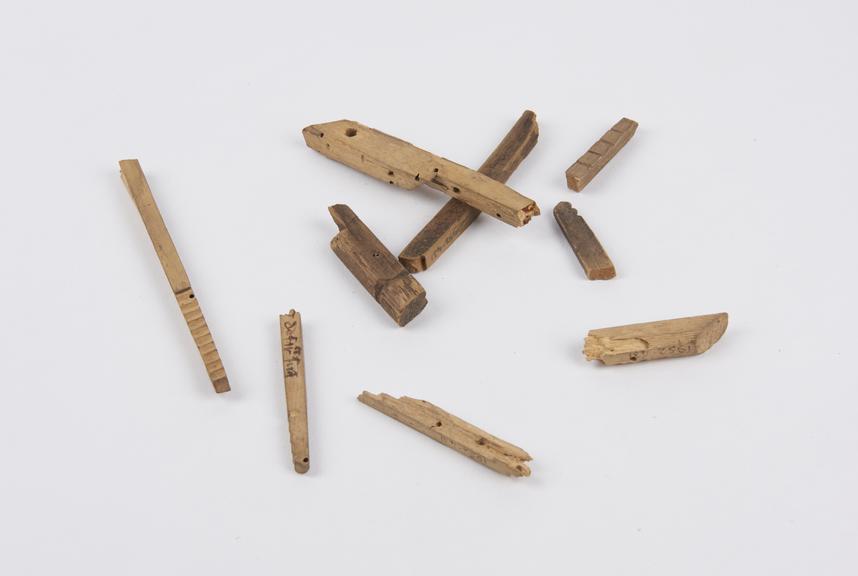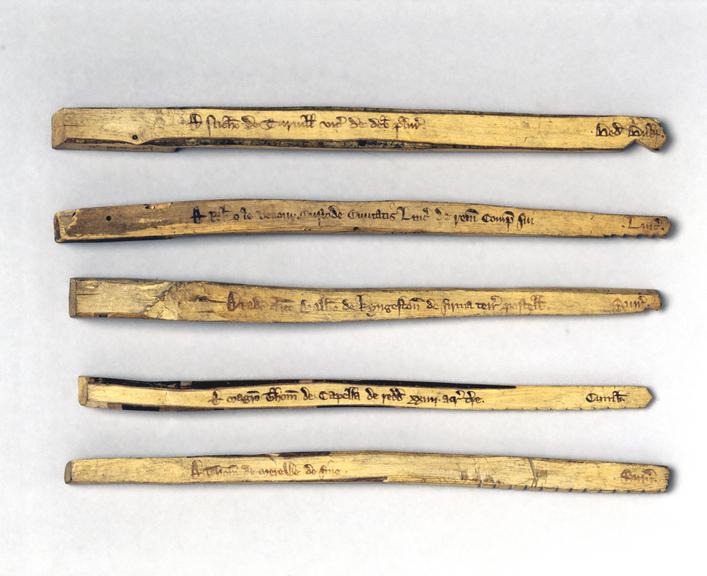Medieval Exchequer Tally Stick
circa 1440






Sixteen exchequer tallies (stocks only)
From the 12th to the 19th centuries, the Exchequer of England used tally sticks made of wood to account for taxes owned and collected. Using notched pieces of wood or bone to record numbers had been a practice already thousands of years in existence. The Ishango Bone found in modern day Uganda, which is believed to be one of the world’s earliest mathematical devices, has notches organised in three columns dating over 20.000 years ago. Roman natural philosopher Pliny the Elder described the best wood for tally sticks in his writings around 77 C.E.
The stick would be split in half: the lender received ‘the stock’ which is where the modern meaning of the word for a finance certificate originates from, and the debtor the other half, called the ‘foil’. In these sticks, which are only stocks, notches show the amount deposited, the name of the lender, the county, the time of year when the money can be repaid, and the year. The stick’s other half contained the same information. When the debt was paid, matching the two halves showed that they ‘tallied, the wood’s unique features and split ensuring high security against forgeries.
As tally sticks were a form of contract for an amount of money between a creditor and a debtor, they were also used as a form of money, the same way as coins, to pay wages and buy and sell items circulated between people.
Following tally sticks’ abolition in England in 1826, a fire to burn a large amount of left behind sticks got out of control, resulting in burning down the Palace of Westminster on 16 October 1834.




